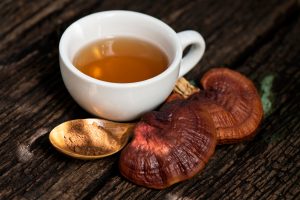#101 #corrinaallenkiersons #explore #fieldwork #science
Not all mushrooms are equal: Identifying a quality functional mushroom product
Jeff Chilton calls mushrooms “the missing dietary link.” Chilton, a former mushroom farmer and the founder of Nammex, a medicinal mushroom extract producer based in British Columbia, says that the science behind the humble mushroom’s health benefits is solid — but consumers need to be sure that they’re buying the real thing.
According to Chilton, the best mushroom supplements have an unsurprising main ingredient: mushroom. Lesser products make mushroom claims, but the dominant ingredient in many of them is nothing but grain powder.
MOG versus the mighty mushroom
Mushrooms and other fungi spring up not from seeds but from spores. With mushrooms, spores land on soil or decomposing wood or tree bark, they then germinate into fine filaments that will fuse together to form a network called mycelium — a root-like system that is capable of producing mushrooms (aka fruit bodies).

Mycelium, however, will also happily colonize sterilized grains like oats or rice without ever producing mushrooms. This lab-grown mycelium covered grain is called “grain spawn” and is used as seed to grow mushrooms.
But U.S. companies are using this grain spawn production process to grow a tempeh-like product (tempeh is fungal mycelium grown on soybeans). When this myceliated grain (MOG) is dried out, the mycelium, which is 90% water, is practically non-existent. “The worst part is that they call it mushroom when they sell it,” Chilton explains. “Not only is it not mushroom, the amount of mycelium compared to the amount of grain is minimal. This lack of fungal tissue means that the product is mostly grain starch, and mushrooms contain no starch.”
The real deal
Most high quality functional mushroom products, says Chilton, will have been grown and harvested in China. With the sheer volume of raw material it takes to produce an extract, mushroom supplements aren’t profitable to make in North America where production costs are significantly higher.
Today China produces more than 85% of the world’s mushroom supply, but also pioneered the cultivation of shiitake mushrooms in the 12th century. You could call them the world’s foremost mushroom experts, with dozens of research institutes and tens of thousands of small scale family mushroom farms. What can be produced cheaply in North America, however, is mycelium on grain. A product claiming to be mushroom but with a label that says “made in the U.S.A.” is one clue that the powder inside is probably MOG.
What to look for in a quality functional mushroom product
Finding genuine mushroom powders and extracts can be as easy as flipping over the bottle to read the “facts” label. You just have to know what to look for — or the right questions to ask the person you’re buying from.
First, find out whether the product is mushroom or mycelium. The health benefits of mushrooms won’t be found in MOGs. Next, know whether what you’re purchasing is a powder or an extract. Powders are better than MOGs but not as high quality a functional mushroom product as extracts. Next, dig into the details: Is the product organic? What medicinal compounds does it list? What quantities of those compounds does it contain? Has the product been tested?

One of the best indicators that consumers are buying a genuine mushroom product is to check where it comes from. A product from China is more likely to be mushroom while a U.S.-produced supplement is almost guaranteed to be MOG, says Chilton.
There are also some key terms that are “this isn’t a genuine mushroom product” red flags. Avoid ones that advertise themselves as myceliated brown rice, mycelial biomass, organic white milo, fermented, or containing primordia and exocellular compounds.
Beyond the label, however, a genuine mushroom product will identify itself in several key ways. The most obvious one is that it will taste and smell like mushroom (myceliated products taste sweet and starchy in contrast). The other is color. MOG will typically be uniform in color, representing the shade of the grain it was grown on. Mushroom products will be varied in color, according to what species of mushroom they’re made from.
Why quality matters
Beta-glucans, explains Chilton, are “the key compound in mushrooms that make them medicinal.” A quality functional mushroom product will be chock full of beta-glucans, an ingredient that can boost the immune system and improve heart health. They’ll also contain ergosterol and in some species like reishi and chaga, compounds called triterpenoids. What they won’t have is a high level of alpha-glucans that come from the starch present in MOG. Mycelium on grain has extremely low levels of beta-glucans, making its medicinal value next to non-existent. Nammex’s testing showed an average of 6% beta-glucans in MOG while mushrooms have an average of 35% beta-glucans. That’s a huge difference in quality — and in the benefits to your health.
JOIN THE CONVERSATION
Whether you’re a fungi fledgling or a mature mycophile, you’re in good company. Join our community’s discussion about all things mushroom.
- This topic has 0 replies, 1 voice, and was last updated 4 years, 4 months ago by .
- You must be logged in to reply to this topic.





